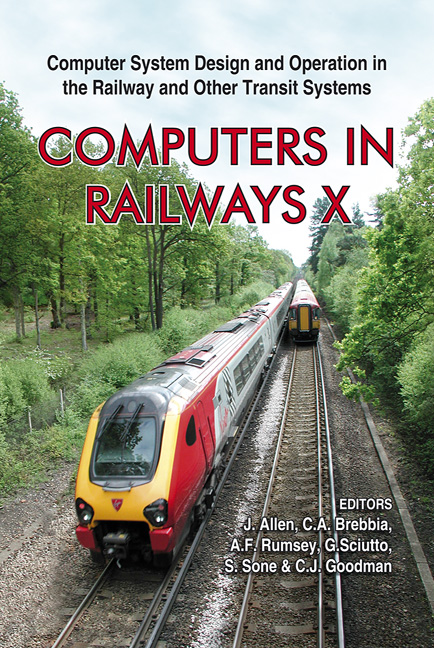Blocking Time Reduction For Level Crossings Using The Genetic Algorithm
Price
Free (open access)
Transaction
Volume
88
Pages
10
Published
2006
Size
702 kb
Paper DOI
10.2495/CR060301
Copyright
WIT Press
Author(s)
Y. Noguchi, H. Mochizuki, S. Takahashi, H. Nakamura, S. Kaneko & M. Sakai
Abstract
The blocking time of a level crossing influences traffic on a road that crosses a rail line. The blocking time of a level crossing will be especially long on a heavy traffic rail line. The purpose of this paper is to reduce the blocking time of level crossings by optimising the railroad schedule. We propose an optimal schedule in which the departure time at each station is delayed minutely from the time of the planned schedule. Since there are many trains on a heavy traffic rail line, the number of combinations of minutely adjusted departure times will be enormous. We used the genetic algorithm (GA) for searching for an optimal railroad schedule. The delay time for each train at each station is used as a gene value, and a chromosome is composed by connecting the genes for each train. The fitness value is the total blocking time of all level crossings on the model rail line. Results for the computer simulation show that our optimal railroad schedule gives a shorter total blocking time compared with the planned schedule. In addition, we report our examination of a composition of the GA calculation with a grid computing technology for the purpose of reducing the GA operation time Keywords: level crossing, railroad schedule, genetic algorithm, grid computing. 1 Introduction At present, on Japanese railroads, an increase of passenger transportation capacity is brought about by an increase in the number of trains and an increase in the number of cars to a train. This leads to lengthening the time that a level crossing is blocked by trains going up and down. As a result, there is a problem
Keywords
level crossing, railroad schedule, genetic algorithm, grid computing.





